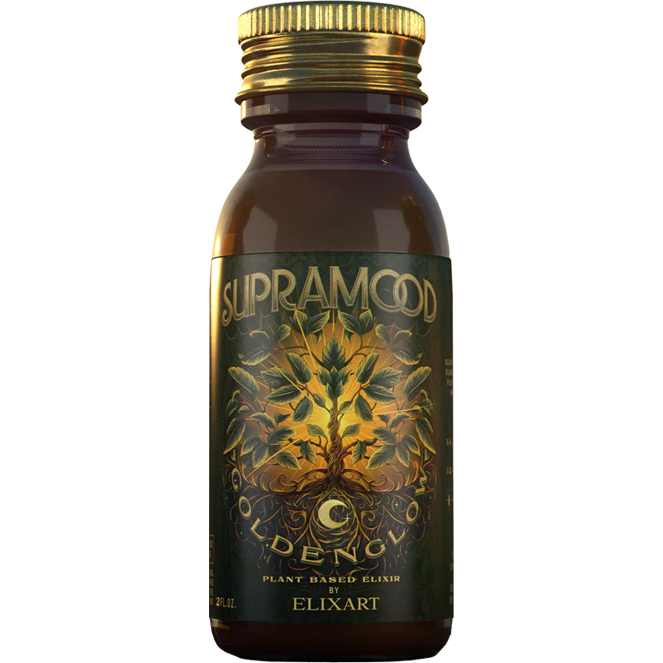Introduction
Should you add fats to kava to get a stronger drink? (research by Root & Pestle)
Kava is a traditional drink with strong cultural significance in the Pacific Islands, especially among the Ni Vanuatu people. It has been consumed for centuries during social gatherings and ceremonies. Kava is not only valued for its relaxing effects but also for its ability to bring people together and preserve traditions. The therapeutic properties of kava come from its active compounds called kavalactones.
Recently, there has been an ongoing discussion about whether adding fats to kava while preparing it can enhance its effects. Some people believe that since kavalactones are supposedly more soluble in fats than water, using ingredients like coconut oil or milk could make the drink more potent. Supporters of this idea often share personal stories of intensified experiences as evidence.
In this article, we will thoroughly examine these claims and explore the potential advantages and disadvantages of adding fats to kava. With the help of recent research conducted by Root & Pestle, we will analyze the scientific basis behind these beliefs and present findings that may challenge popular opinions.
Understanding Kava and Kavalactones
What is Kava?
Kava, scientifically known as Piper methysticum, is a shrub native to the Pacific Islands. For centuries, the root of this plant has been used by the Ni Vanuatuan peoples and other Pacific cultures in traditional ceremonies and social gatherings. The preparation of kava involves grinding or pounding its roots into a powder, which is then mixed with water to create a drink known for its calming and euphoric effects.
Kava's cultural significance is deeply rooted in the traditions of the Pacific Islanders. It plays a pivotal role in various rituals, including welcoming guests, forging alliances, and spiritual ceremonies. The traditional methods of kava preparation have been passed down through generations, emphasizing the importance of preserving these practices.
Role of Kavalactones
The active compounds in kava are known as kavalactones. These are responsible for the drink's psychoactive properties. There are six primary kavalactones that contribute to kava's effects:
- Kavain
- Dihydrokavain
- Methysticin
- Dihydromethysticin
- Yangonin
- Desmethoxyyangonin
These compounds interact with the central nervous system, producing effects such as relaxation, stress relief, and mild euphoria.
Kavalactone extraction is crucial during kava preparation. Traditional methods involve kneading or soaking the ground root in cold water. This process allows the kavalactones to be efficiently extracted without using any fats or oils. The solubility of kavalactones in water facilitates their release into the liquid, making it ready for consumption.
Traditional Kava Methods
The Ni Vanuatuan peoples have perfected the art of kava preparation over centuries. Their methods prioritize simplicity and effectiveness:
- Root Preparation: The roots are cleaned, peeled, and dried.
- Grinding/Pounding: The dried roots are ground into a fine powder.
- Mixing with Water: The powder is mixed with cold water and kneaded to extract the kavalactones.
These steps ensure maximum extraction efficiency without altering the natural composition of the drink.
In understanding kava and its active compounds, one appreciates why traditional methods have stood the test of time.
The Fat Addition Debate: Exploring Common Claims
The debate around adding fats to kava, such as coconut oil or coconut milk, has gained traction among enthusiasts and casual drinkers alike. This section delves into the common claims and anecdotal evidence supporting this practice.
Common Claims Supporting Fat Addition
Many proponents of adding fats to kava preparation suggest that it enhances the drink's effects. The primary argument is based on the belief that kavalactones, the active compounds in kava, are more soluble in fats than in water. This idea posits that incorporating fats could potentially lead to a higher extraction efficiency of kavalactones, resulting in a more potent drink.
Key claims include:
- Enhanced Potency: The notion that fats improve the solubility of kavalactones, thereby increasing their presence in the final beverage.
- Improved Taste: Some users claim that adding fats like coconut milk can mask kava's earthy and sometimes bitter taste, making it more palatable.
- Smoother Texture: Fats may give the drink a creamier texture, which some find preferable to the gritty consistency of traditional kava preparations.
Anecdotal Evidence from Users
Anecdotal evidence often plays a significant role in popularizing new methods and practices. Several kava drinkers have shared their personal experiences with fat-added kava drinks:
"I tried adding a tablespoon of coconut oil to my kava, and it felt like the effects were more pronounced. It also tasted better!" – A Kava Forum User
"Mixing coconut milk into my evening kava session has become a ritual. Not only does it smooth out the flavor, but I also feel a deeper sense of relaxation." – An Enthusiast's Blog
Despite these positive testimonials, there is no shortage of skepticism regarding these claims. While some users report heightened effects and improved taste, others argue that any perceived benefits may be psychological rather than physiological.
The Science Behind Kavalactone Extraction
Understanding the process of kavalactone extraction is crucial for any kava enthusiast aiming to get the most out of their drink. Kavalactones, the active compounds in kava, are responsible for its calming and euphoric effects. These compounds need to be effectively extracted during preparation to ensure potency.
Solubility: Fats vs. Water
A common perception is that kavalactones are more soluble in fats than in water. This idea stems from the chemical nature of kavalactones, which are lipophilic (fat-loving) substances. The logic follows that adding fats like coconut oil or milk to kava should enhance its extraction:
- Water Solubility: Traditional kava preparation methods rely solely on water. Despite kavalactones being lipophilic, they can still be extracted efficiently using water through vigorous kneading and squeezing.
- Fat Solubility: Fats can dissolve kavalactones more readily at a chemical level. However, practical application during preparation often reveals mixed results.
Importance of Extraction Efficiency
Extraction efficiency directly impacts the potency of the final drink:
- Water-based Preparation: When water is used, thorough kneading helps break down the cell walls of the kava root, releasing kavalactones into the liquid. This traditional method has been honed over generations to maximize potency.
- Fat-based Preparation: Adding fats theoretically increases solubility but can lead to complications. For instance, fats may coat strainer bags, potentially trapping kavalactones and reducing overall extraction efficiency.
The debate hinges on whether the theoretical benefits of fat solubility translate into practical gains during preparation. Root & Pestle's research aims to clarify this by examining if adding fats truly enhances or hinders kavalactone extraction.
A deeper dive into their findings reveals intriguing insights that challenge conventional wisdom on this practice. For instance, studies have shown that while kavalactones are indeed lipophilic, they can also be effectively extracted with water under certain conditions. Furthermore, research indicates potential health risks associated with excessive consumption of certain forms of kava, emphasizing the importance of understanding the extraction process better. Additionally, previous studies have explored various aspects of kava consumption and its effects, further enriching our understanding of this unique beverage.
Skepticism Around Fat Addition in Kava Preparation
Presentation of Skepticism Based on Personal Experiences
Some kava enthusiasts report that adding fats like coconut oil or milk seems to make their drink less potent. They often mention that the kava prepared with fats feels weaker and harder to consume. This skepticism isn't just anecdotal; it is echoed by many who have tried various fat-added preparations and found them lacking compared to traditional water-based methods.
Arguments Against the Effectiveness of Fat in Enhancing Potency or Taste
Several arguments arise against using fats in kava preparation:
- Clogging Issues: Users often observe that fats can coat the strainer bag, clogging it up and preventing effective extraction of kavalactones. This coating could result in fewer active ingredients making their way into the drink.
- Taste Alteration: Adding fats can alter the taste profile of kava, making it less palatable for some. The earthy flavors of traditional kava may clash with the creamy texture and taste introduced by substances like coconut milk or oil.
- No Perceptible Enhancement: Many users find no noticeable enhancement in effects when fats are added. The supposed increase in potency doesn't align with their experiences, leading to questions about the validity of such claims.
These points highlight why some remain skeptical about the benefits of adding fats to kava. Root & Pestle's research strengthens these arguments by providing scientific insights that validate these personal observations.
For those who cherish the traditional experience, sticking to water-based preparations seems to offer a more consistent and potent result without compromising taste or efficacy.
Recent Research Findings by Root & Pestle
Root & Pestle recently conducted a series of controlled experiments on kava to investigate the claims surrounding fat addition in kava preparation. Their research aimed to determine whether adding fats such as coconut oil, coconut milk, or regular milk would enhance the extraction efficiency of kavalactones, the active compounds responsible for kava's effects.
Summary of Research Methodology and Key Findings
Root & Pestle's systematic approach involved preparing multiple batches of kava using both traditional water-based methods and variations that included differing amounts and types of fats. They meticulously measured the total kavalactone content in each batch to assess any changes in extraction efficiency attributed to the added fats.
Key findings from their research include:
- No Significant Increase in Extraction Efficiency: Their data revealed no substantial improvement in kavalactone extraction efficiency when fats were added during the preparation process.
- Potential Binding or Clogging Issues: In some cases, the presence of fats appeared to hinder the extraction process, potentially due to binding or clogging issues with the strainer bag used for preparing kava.
Key Results from the Study: Total Kavalactone Extraction Efficiency
The most striking outcome from Root & Pestle's study was a detailed analysis showing a decrease in total kavalactone extraction efficiency by up to 17% when fats were introduced during preparation. This finding challenges the common belief that adding fats enhances the potency of kava.
Several factors could contribute to this reduction:
- Binding Issues: Kavalactones may bind more readily to fat molecules, making them less available in the final drink.
- Clogging of Strainer Bags: Fats can coat the strainer bags used in traditional kava preparation, preventing efficient extraction and leading to a weaker beverage.
These insights underscore the complexity of kavalactone solubility and suggest that adding fats may not be beneficial for those seeking a stronger drink.
Root & Pestle's rigorous experimental design and thorough analysis provide valuable evidence against the practice of adding fats to kava. While anecdotal reports have suggested potential benefits, this scientific investigation offers a more reliable perspective. The detailed examination of total kavalactone extraction efficiency highlights that traditional water-based methods remain superior in preserving the potency of kava.
For those interested in understanding more about the health effects and potential benefits associated with kava consumption, it's essential to consider these findings as they challenge prevalent misconceptions about fat addition during preparation.
Traditional vs. Modern Preparation Methods: A Comparative Analysis
Traditional Kava Preparation Methods
For the Ni Vanuatuan people, kava preparation is a ritual filled with tradition and cultural importance. The process usually includes:
- Harvesting: Kava roots are carefully harvested from mature plants.
- Cleaning and Peeling: The roots are cleaned and peeled to remove any dirt and impurities.
- Grinding or Chewing: Traditionally, kava roots are ground or chewed to break them down into a fine pulp. This step is crucial for releasing the kavalactones.
- Mixing with Water: The pulp is then mixed with cold water in a specific ratio to create the drink.
- Straining: The mixture is strained through a cloth to separate the liquid from the root fibers, ensuring a smooth, drinkable beverage.
This method has lasted for centuries, not just because it's simple but also because it's effective in extracting the active compounds efficiently.
Modern Practices Including Fat Additions
On the other hand, modern practices have introduced variations such as adding fats (e.g., coconut oil, milk) during preparation. Supporters say these additions:
- Enhance the solubility of kavalactones.
- Improve the taste and texture of the drink.
- Potentially increase the potency of kava.
These methods often involve:
- Blending: Using blenders to mix kava powder with water and fats.
- Heating: Some people heat the mixture slightly to help dissolve fats better.
- Multiple Straining Steps: Due to the added fats, multiple straining steps may be required to achieve a smooth consistency.
The appeal of these modern methods lies in their perceived convenience and potential potency enhancement.
Implications for Kava Drinkers: Embracing Tradition for Enhanced Experience
Modern methods might seem attractive at first glance, but traditional preparation methods offer several benefits that modern practices can't replicate:
Purity and Potency
Traditional methods focus on extracting kavalactones purely through water-based extraction. This approach ensures that:
- No Loss of Active Compounds: Adding fats can lead to binding or clogging issues, reducing total kavalactone extraction efficiency by up to 17%, as indicated by Root & Pestle's research.
- Consistent Potency: Traditional methods provide a more consistent potency without the variability introduced by fats.
Cultural Connection
Engaging in traditional preparation allows drinkers to:
- Connect with centuries-old practices that have been perfected over time.
- Honor and respect the cultural heritage of kava consumption among the Ni Vanuatuan people.
Practicality
Despite seeming labor-intensive, traditional methods are quite practical:
- Require minimal equipment (just a cloth for straining).
- Easy to replicate anywhere without needing additional ingredients like fats or specialized tools.
What Current Drinkers Can Learn from Traditional Approaches
For those interested in enhancing their kava experience without relying on fats:
- Stick to Water-Based Extraction: Use cold water as your primary solvent; it’s effective and honors traditional practices.
- Focus on Quality Ingredients: Ensure you’re using high-quality kava roots or powder for optimal results.
- Adopt Patience in Preparation: Take time during each step — grinding or chewing thoroughly, mixing well, and straining properly can significantly impact your final drink’s quality.
- Embrace Rituals: Incorporate elements of traditional rituals into your preparation process. This not only enriches your experience but also adds a layer of mindfulness and respect toward this ancient practice.
By learning about traditional preparation methods and embracing their core principles, modern kava drinkers can achieve an enhanced experience that respects both potency and cultural significance, without necessarily resorting to fat additions.
Conclusion: Should You Add Fats to Kava? Final Thoughts Based on Research and Tradition
The question, "should you add fats to kava to get a stronger drink?", invites various perspectives. Root & Pestle's meticulous research sheds light on this debate, offering a science-backed viewpoint that challenges prevailing assumptions.
Scientific Findings
Root & Pestle's studies reveal that adding fats during kava preparation does not significantly enhance the drink's potency. Contrary to popular belief, the total kavalactone extraction efficiency actually decreases by up to 17% when fats are introduced. This reduction might be attributed to potential binding or clogging issues, where fats can trap kavalactones and hinder their transfer into the final drink.
Cultural Perspectives
Traditional practices among the Ni Vanuatuan people, who have been consuming kava for centuries, do not involve adding fats. The enduring nature of these methods suggests that pure water-based preparations are both effective and culturally significant. Embracing these time-honored techniques can enhance one's kava experience without relying on modern adaptations like fat addition.
Balancing Tradition and Modern Insights
While anecdotal evidence may suggest some benefits of adding fats, rigorous scientific analysis coupled with cultural wisdom advises against it. For those seeking a potent and authentic kava experience, sticking to traditional preparation methods remains the most reliable approach.
FAQs (Frequently Asked Questions)
What is kava and why is it culturally significant?
Kava is a beverage made from the root of the kava plant, traditionally used by the Ni Vanuatuan peoples for its calming effects. It plays a vital role in cultural ceremonies and social gatherings, promoting relaxation and community bonding.
What are kavalactones and how are they related to kava?
Kavalactones are the active compounds found in kava that contribute to its effects. During preparation, these compounds are extracted, and their efficiency is crucial for determining the potency of the final drink.
What claims exist regarding the addition of fats to kava?
Common claims suggest that adding fats, such as coconut oil or coconut milk, can enhance the effects of kava or improve its taste. Some users report positive personal experiences with fat-added kava drinks.
Does adding fats to kava improve extraction efficiency of kavalactones?
Research by Root & Pestle indicates that adding fats may actually decrease total extraction efficiency of kavalactones by up to 17%. This suggests that fats may bind or clog during preparation, hindering effective extraction.
What are some traditional methods of preparing kava compared to modern practices?
Traditional methods employed by the Ni Vanuatuan peoples focus on using water alone for preparation. In contrast, modern practices often include fat additions. Traditional methods have endured due to their effectiveness in producing a pure and potent drink.
Should you add fats to kava for a stronger drink?
Based on both scientific research and cultural perspectives, it appears that adding fats does not significantly enhance the potency of kava. Embracing traditional water-based preparation methods may provide a better experience without reliance on fats.







Leave a comment
This site is protected by reCAPTCHA and the Google Privacy Policy and Terms of Service apply.